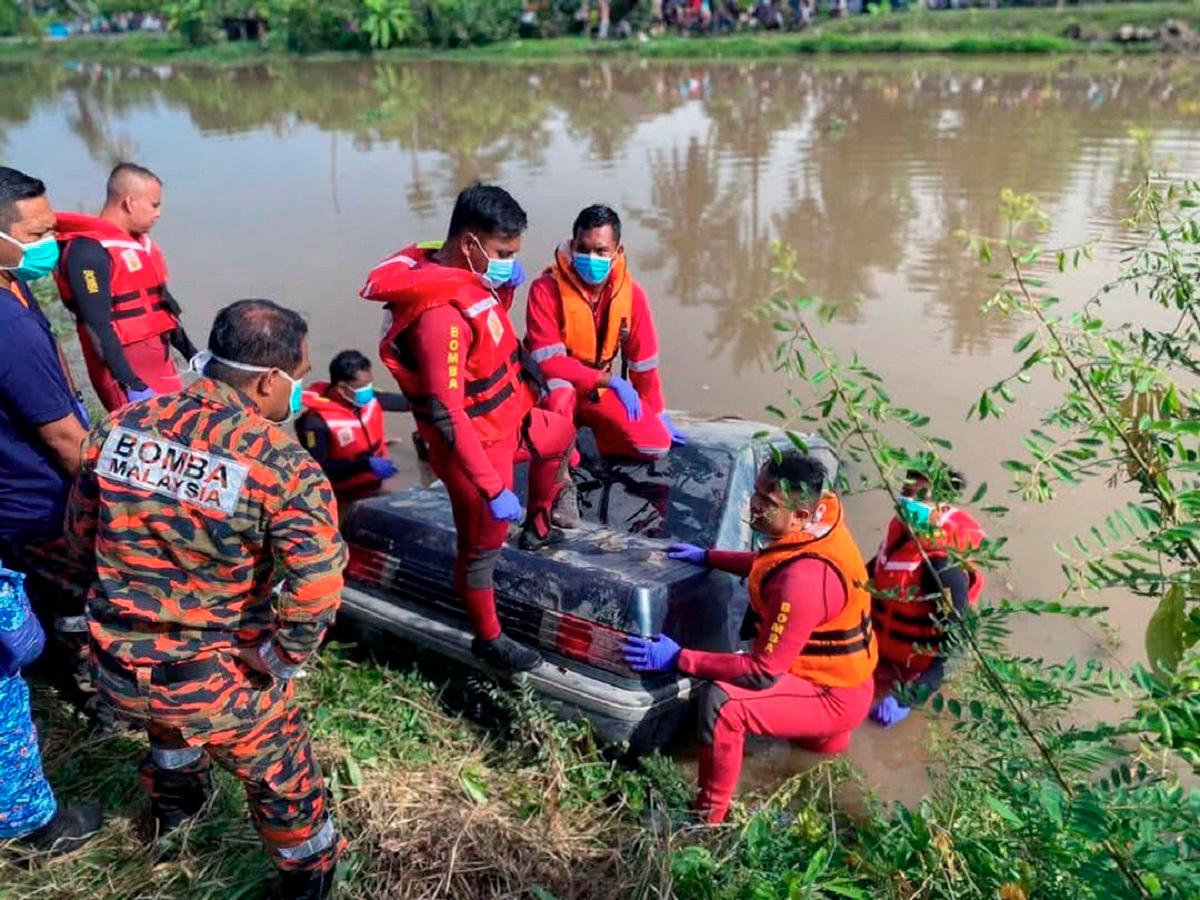THE nation mourns the tragic loss of six family members in the Sungai Korok incident, where a car plunged into the river, claiming the lives of an entire family.
This devastating accident has sent shockwaves throughout the country, prompting both grief and urgent calls for water emergency preparedness.
The family, including Mohd Azim Ezzat Ishak, 32, his wife Nurul Hidayah Khalijah Razman Effendy, 31, and their four children, aged between six months and nine years, were reported missing after failing to return home following an overnight stay at a relative’s house in Taman Aman, Jitra, Kedah.
The heartbreaking incident serves as a stark reminder of how quickly tragedy can strike, leaving families and communities grappling with unimaginable loss. As the nation extends its deepest condolences to the bereaved families, safety experts are emphasising the critical importance of knowing how to respond in such emergencies.
A Nation in Mourning
The loss of six lives from one family has deeply affected Malaysians across the country. In expressing condolences, community leaders have called for prayers that the victims be placed amongst the faithful, whilst those left behind are granted strength to face this tremendous test.
“We can only send prayers that they are placed amongst the believers, and that the families left behind are given strength to face this very heavy trial,“ expressed Public Health Malaysia in its Facebook post, in response to the tragedy.
Learning from Tragedy: Essential Water Emergency Knowledge
According to Public Health Malaysia, the tragic incident has since sparked important conversations about emergency preparedness.
As such the safety advocate group is using this moment to educate the public about crucial survival steps that could make the difference between life and death in similar situations.
Critical Steps for Car-in-Water Emergencies
Safety experts have outlined a simple but potentially life-saving sequence for anyone whose vehicle becomes submerged:
1. Stay Calm: Panic only slows reaction time. Focus entirely on getting out of the vehicle.
2. Remove Seatbelt Immediately: This should be the first action taken upon realising the car has plunged into water.
3. Don’t Attempt to Open Doors: Water pressure makes doors nearly impossible to open from inside.
4. Lower Windows Immediately: Within the first 30-60 seconds, the car’s electronic systems may still function, making this the optimal time to lower windows.
5. Exit Through Windows: Push yourself out as quickly as possible through the lowered windows.
6. Break Windows if Necessary: If windows won’t lower, use window-breaking tools, headrest metal prongs, or any available hard objects to shatter the glass.
The Life-Saving Sequence: Belt-Window-Exit
Emergency response experts recommend memorising this simple sequence: Seatbelt - Window - Exit. This easy-to-remember formula could prove invaluable in high-stress emergency situations where clear thinking becomes challenging.
Essential Emergency Equipment
The tragedy has also highlighted the importance of keeping emergency equipment readily accessible in vehicles. Safety advocates recommend:
Window-breaking tools - Specifically designed for emergency glass breaking
Seatbelt cutters - For situations where belt mechanisms jam
Accessible placement - Emergency tools should be stored within easy reach, not in the boot
The key emphasis is on accessibility during emergencies, when every second counts and reaching distant storage areas becomes impossible.
Public Safety Education Campaign
The incident has sparked calls for broader public safety education campaigns focusing on vehicle water emergency responses. Many Malaysians admit they’ve never considered what to do if their vehicle becomes submerged, making this knowledge potentially life-saving for countless families.
Road safety organisations are emphasising that whilst such incidents are relatively rare, the consequences are so severe that basic emergency knowledge should be considered essential for all drivers.
Moving Forward with Purpose
As Malaysia processes this devastating loss, the focus is shifting towards ensuring such knowledge becomes widely available.
The simple sequence of belt-window-exit, combined with proper emergency equipment, represents knowledge that every driver should possess.
The victims of the Sungai Korok tragedy will be remembered not only for the lives they lived, but for the awareness their loss has brought to countless others about the importance of emergency preparedness.
Their legacy may well be the lives saved by others who, having learned from this tragedy, are better prepared to respond if they ever face similar circumstances.









